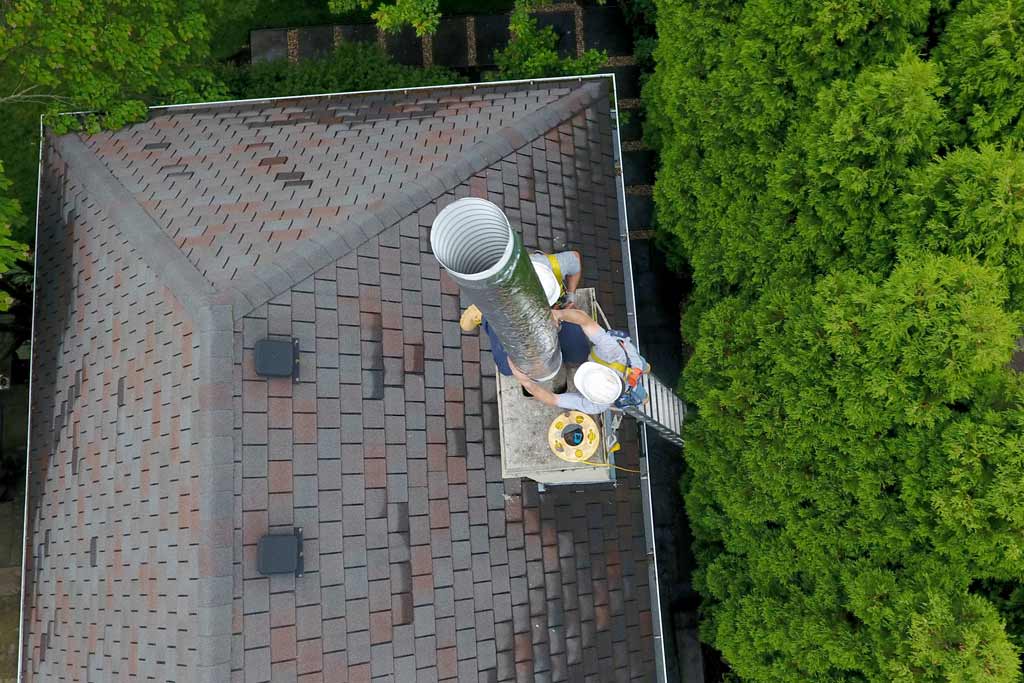

Sealing Flues: Techniques
When you’re sealing any kind of opening on a heating device (a furnace, water heater, or a chimney), you’ll need to pay special attention to the material you use to seal the flue as well as the building codes that regulate clearance. Per Energy Star, building codes typically require that there is a 1-inch clearance from metal flues, as these flue pipes become incredibly hot, from any combustible material like insulation. Energy Star also suggests specific material for flues, vents, and pipes on varying heating equipment:- Furnaces and water heaters: should have pipes made of galvanized metal and sealed with aluminum flashing and high-temperature silicon caulking.
- Chimney: should have pipes made from masonry or metal and in similar fashion, be sealed with aluminum flashing and high-temperature silicon caulking.
- Plumbing: should have piping comprised of cast iron or PVC and be sealed with expanding foam or caulking depending on the gap.
Sealing the Flue Along the Chimney
You can install a chimney flue channel yourself if you’re equipped with a basic background in home improvement. While you don’t need to be a professional, you should have one come in after-the-fact for an inspection just to make sure everything was installed correctly. When dealing with carbon monoxide and combustion byproducts, you can never be too cautious. Sealing the flue pipe is a part of the installation process. First, you’ll need to make sure the chimney is as clean as possible, removing any lingering debris, insects, or old soot. A contractor should be called off and the installation should be put off if your inspection comes across any missing brickwork or damaged masonry. The flue is created out of metal sheets. You’ll lay these sheets out, rolling them so they’ll fit inside the chimney while placing screws along their edges to secure them in place. Your flue kit (that can be purchased from a home supply store) will provide you with a string that will allow you to insert the sheets inside the chimney, attaching it to the cap. You’ll then insert the flue liner, lowering it down inside of the flue itself. The flue is then sealed with a band that should be included in your kit. Sealing the flue is essential in preventing gasses from escaping back into your home.
